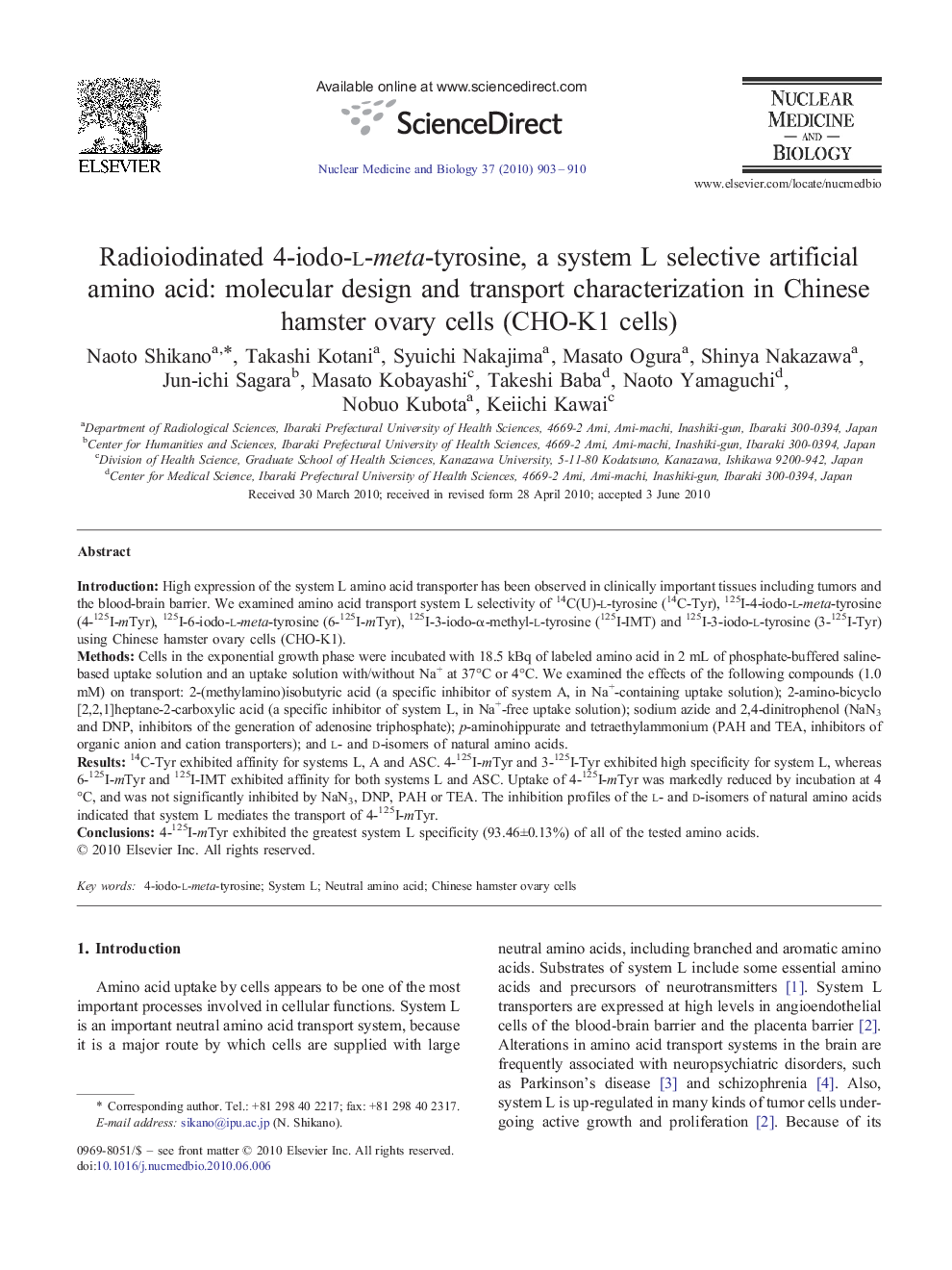| Article ID | Journal | Published Year | Pages | File Type |
|---|---|---|---|---|
| 2154389 | Nuclear Medicine and Biology | 2010 | 8 Pages |
IntroductionHigh expression of the system L amino acid transporter has been observed in clinically important tissues including tumors and the blood-brain barrier. We examined amino acid transport system L selectivity of 14C(U)-l-tyrosine (14C-Tyr), 125I-4-iodo-l-meta-tyrosine (4-125I-mTyr), 125I-6-iodo-l-meta-tyrosine (6-125I-mTyr), 125I-3-iodo-α-methyl-l-tyrosine (125I-IMT) and 125I-3-iodo-l-tyrosine (3-125I-Tyr) using Chinese hamster ovary cells (CHO-K1).MethodsCells in the exponential growth phase were incubated with 18.5 kBq of labeled amino acid in 2 mL of phosphate-buffered saline-based uptake solution and an uptake solution with/without Na+ at 37°C or 4°C. We examined the effects of the following compounds (1.0 mM) on transport: 2-(methylamino)isobutyric acid (a specific inhibitor of system A, in Na+-containing uptake solution); 2-amino-bicyclo[2,2,1]heptane-2-carboxylic acid (a specific inhibitor of system L, in Na+-free uptake solution); sodium azide and 2,4-dinitrophenol (NaN3 and DNP, inhibitors of the generation of adenosine triphosphate); p-aminohippurate and tetraethylammonium (PAH and TEA, inhibitors of organic anion and cation transporters); and l- and d-isomers of natural amino acids.Results14C-Tyr exhibited affinity for systems L, A and ASC. 4-125I-mTyr and 3-125I-Tyr exhibited high specificity for system L, whereas 6-125I-mTyr and 125I-IMT exhibited affinity for both systems L and ASC. Uptake of 4-125I-mTyr was markedly reduced by incubation at 4 °C, and was not significantly inhibited by NaN3, DNP, PAH or TEA. The inhibition profiles of the l- and d-isomers of natural amino acids indicated that system L mediates the transport of 4-125I-mTyr.Conclusions4-125I-mTyr exhibited the greatest system L specificity (93.46±0.13%) of all of the tested amino acids.
